
views
What are tritons?
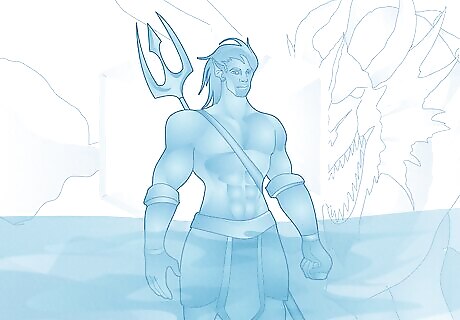
Tritons are a playable species originating from the Plane of Water. In D&D 5e, tritons are a race of people living underwater in the seas and oceans of the Material Plane; their communities strive to defend the world against all undersea threats, from evil elementals to Kraken. Although they have arms and legs (like most humanoids), their bodies are adapted for underwater living. Triton traits in 5e include: Creature type: Humanoid. Size: Medium (the original stats also state that Tritons are 5 feet tall on average). Speed: A walking speed of 30 feet and a swimming speed equal to their walking speed. Amphibious: Tritons can breathe both air and water. Darkvision: Tritons can see in dim light out to a range of 60 feet as though it were bright light and darkness as if it were dim light. Colors appear as shades of grey in darkness. Age: Tritons reach maturity around 15 years old and live up to 200 years. Keep in mind that there are a few differences between the current Triton stats in Tasha’s Cauldron of Everything (TCoE) and the original stats in Volo’s Guide to Monsters (VGtM). For example, VGtM also states that Tritons tend to have a Lawful Good alignment, while TCoE lets you decide your triton’s alignment for yourself.
Triton Features
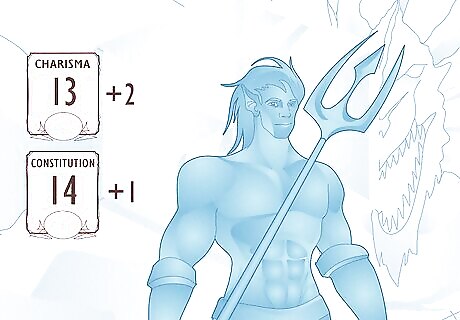
Ability score increase All PCs (player characters) in D&D 5e get an ability score increase during character creation; earlier iterations of 5e give specific ability score bonuses to each species based on their general strengths, but TCoE allows you to customize your PC’s ability score increase. So, when making a triton, you can increase 1 score by +2 and a different score by +1, or increase 3 different scores by +1. For example, you could give your triton a +2 bonus to Charisma and a +1 to Constitution—or, alternatively, you could give them a +1 each to Charisma, Dexterity, and Constituion. Keep in mind that no ability score can be increased above 20. In VGtM, tritons had a +1 ability score increase to Strength, Constitution, and Charisma.
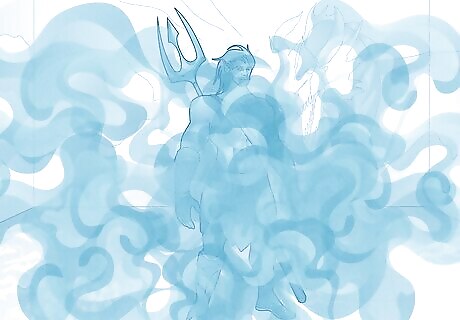
Control Air and Water Tritons can cast the Fog Cloud spell. Additionally, at the 3rd level, they can cast Gust of Wind, and at the 5th level, they can cast Water Walk. Once you cast one of the above spells using your triton PC’s Control Air and Water feature, you must finish a long rest before casting it again—or you can cast each spell using spell slots of the appropriate level. In the TCoE rules, you can choose Intelligence, Wisdom, or Charisma as your triton’s spellcasting ability for the spells. In VGtM, it’s automatically Charisma. Additionally, in VGtM, the Wall of Water spell becomes available at the 5th level instead of Water Walk.
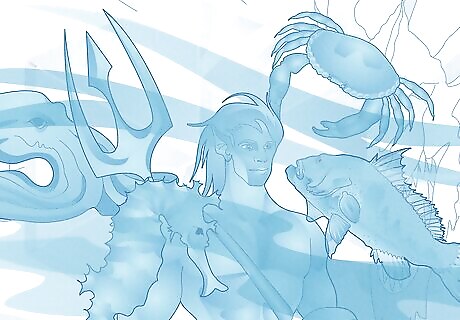
Emissary of the Sea With this feature, a triton PC can communicate with beasts, elementals, and monstrosities that have a swimming speed. Such creatures can understand a triton’s words and simple ideas communicated to them, but triton PCs can’t understand the creatures they speak to in return.
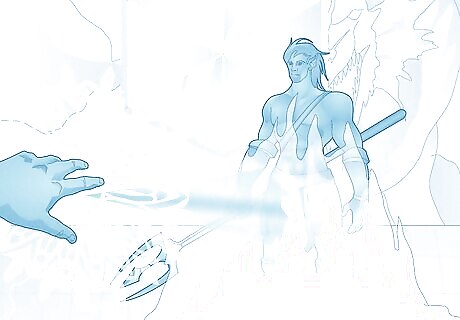
Guarian of the Depths Tritons live in the cold depths of the ocean—and their ability to adapt to those conditions means they have resistance to cold damage. Resistance essentially means that they can halve the amount of cold damage they take. So, for example, if an enemy hit a triton with Ray of Frost for 6 points of cold damage, they’d actually take 3 points.

Languages In TCoE, your triton can speak, read, and write Common in addition to another language that you feel is right for that character (so long as the Dungeon Master agrees). Your DM might modify the list of available languages for a campaign, but other than that, you’re free to choose any of the existing languages in 5e. However, in VGtM, tritons could speak, read, and write Common and Primordial (which is the language of elementals) by default.
Best Classes for Tritons
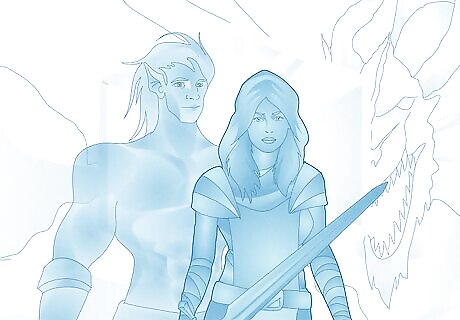
Fighter The fighter class could be great for a hardy triton, especially if you use the Blind Fighting style alongside Fog Cloud (essentially letting you fight in the middle of a fog spell without suffering disadvantage). You could also play an Eldritch Knight fighter; since Eldritch Knights can cast spells, you could cast Fog Cloud multiple times daily using spell slots. If you want to play a “tank” PC specializing in melee combat but the fighter class isn’t your style, tritons also make excellent barbarians. While raging, barbarians are resistant to weapon damage, and the triton’s resistance to cold damage pairs well with that ability.

Rogue Rogues can use Fog Cloud to their advantage (like fighters). If your triton rogue needed to make a quick escape, you could cast Fog Cloud on an enemy (or group of enemies) and Disengage as a bonus action, letting you quickly slip away without taking any attacks of opportunity. Additionally, Darkvision can come in handy, especially while scouting.
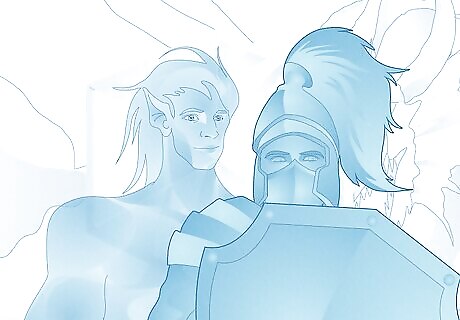
Paladin The paladin class is a no-brainer for a triton! Paladins gain power from oaths dedicated to a particular ideal, and duty-based triton society (defending the world against elemental evils) works well with this mechanic. Beyond that, triton paladins can also take advantage of the Blind Fighting style and combine it with their innate Fog Cloud spell.
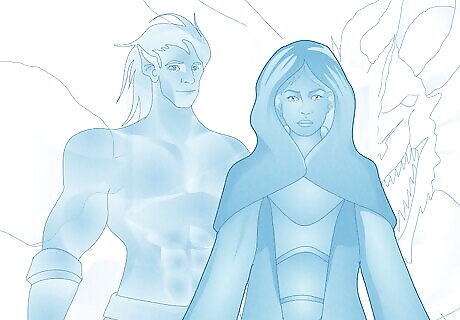
Bard, Sorcerer, or Warlock Bards, sorcerers, and warlocks are arcane spellcasters, and the triton’s Control Air and Water feature (which adds multiple innate spells) can expand each class’s spell list—giving your triton PC more options in combat. For example, you can use Gust of Wind to keep enemies at a distance (which is crucial for many spellcasters) and impose disadvantage with Fog Cloud. If another spellcaster targets your PC with a powerful cold-based spell like Cone of Cold or Ice Storm, the triton’s cold resistance can block some of that incoming damage.
Best Feats for Tritons
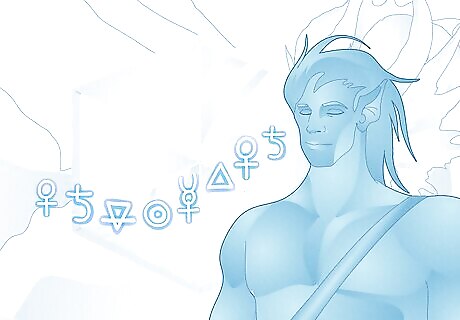
Choose feats that can add to a triton’s innate abilities. Feats are special bonus abilities you can give your PC periodically when they level up. While there are many feats to choose from, some might suit your character better based on their class, function in the party (as a ranged spellcaster, melee fighter, or scout, for instance), and how you want to play them. Consider these feats for a triton: For fighters, barbarians, and paladins: Tough. Tough adds 2 hit points to your PC’s maximum with each level up, so it’s a great way to make any melee fighting class even more hardy. For spellcasters: Ritual Caster. For classes with a limited spell list (especially sorcerers and warlocks), Ritual Caster gives you more utility spell options both in and out of combat. For rogues: Fighting Initiate. This feat lets you give your PC a fighting style, which is perfect if you want to add Blind Fighting to your rogue triton’s repertoire. For any class: Fey Touched. Not only do you get an ability score increase (for Intelligence, Charisma, or Wisdom), but you’ll also get the Misty Step spell (which is a quick teleport spell that can increase your triton’s mobility). For any class: Ability Score Improvement. If there’s an ability you want your triton to increase (especially the primary ability for whatever class you’re playing as), consider giving them an ability score improvement instead of a feat.
Best Backgrounds for Tritons
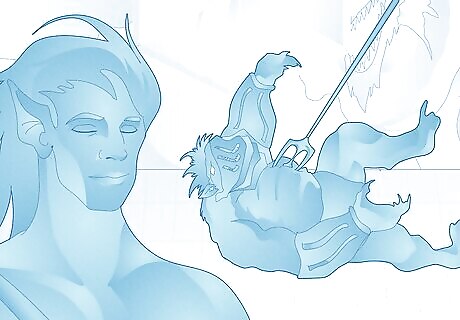
Backgrounds determine a PC’s personal history and experience. Choosing a background is an important part of character creation (just like classes are), so try choosing a feat that best-suits the kind of character you want to play. While there are plenty of backgrounds that might work for a triton (especially based on class), consider the following in particular: Far Traveler. A Far Traveler triton PC may have arrived in the Prime Material recently from the Elemental Plane of Water—perhaps on an important mission or to explore! Folk Hero. A Folk Hero triton might be on a quest to defeat a monster threatening coastal communities or be sent from their home settlement to fulfill an age-old prophecy. Hermit. A Hermit triton might be their community’s sage or lorekeeper, eager to share their knowledge with the world above (or distance themself from their isolated community and learn more on the surface). Cloistered Scholar. A Cloistered Scholar triton might study the Prime Material (or the surface world) for years before finally deciding to embark on an adventure there!
Triton History

Tritons were created long ago by their patron god, Persana. According to history established in previous editions of D&D, tritons were originally created out of magically treated water from the Elemental Plane of Water̉—their native plane. Long ago, they battled evil elementals in the Plane of Water before realizing that those enemies had fled to the Prime Material Plane. Thus, the tritons followed their enemies to the oceans of the Prime Material. After arriving, the tritons decided to settle in the oceans of the Prime Material, particularly around portals and deep sea trenches. Even after they banished most of the evil elementals they’d originally pursued, many tritons decided to remain as protectors of the oceans. Tritons sometimes trade with other sea-dwelling species like merfolk and sea elves, but their settlements are often so remote that they have little contact with outsiders. If you decide to play a triton PC, their dedication to defending the world from extraplanar evil might be a great reason to get them involved in an adventure!
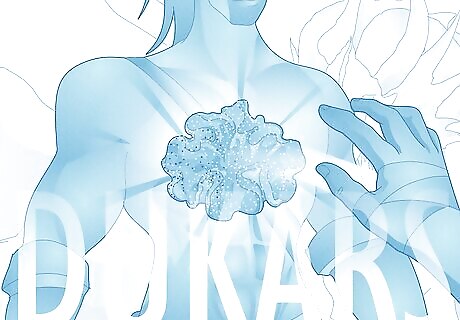
They once had a peacekeeping organization called the Dukars. The Dukars could famously use a ritual and coral implants to tap into powerful magic and were divided into two sects: the Lorekeepers (who preserved history) and Peacekeepers (who gathered knowledge and kept the peace between the ocean’s inhabitants). However, the Dukars eventually vanished in the midst of an unknown conflict. While the Dukars were mainly associated with triton, they also consisted of other undersea races like storm giants, great whales, dolphins, koalinth, and ixitxachitl.
Triton Appearance & Personality
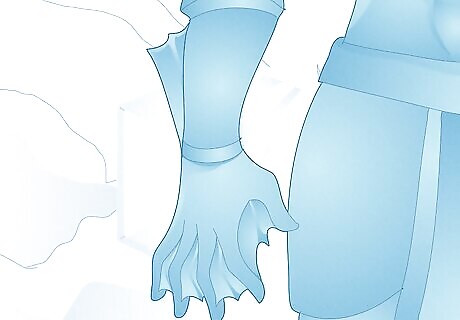
Many tritons have blue-green skin and webbed appendages. They appear human-like in form and stature, though triton skin tones range from deep blue to pearl, green, or other colors in rare cases. They have blue or green hair plus webbed hands and feet, as well as minor dorsal fins (running from their calves to their ankles). Historically, tritons are shorter than the average human. Though many tritons traditionally have long, flowing hair, they tend to braid it or tie it up for combat and weave pieces of coral or metal into their locks. Common triton eye colors include blue and green—though, because of their Darkvision, their pupils can expand and make their eyes appear nearly black. Tritons' physical characteristics let them swim safely down to depths of at least 3,000 feet below the surface of the ocean! Nonetheless, remember: your triton PC’s appearance is ultimately up to you. It may help to know about a triton’s general appearance, but you have creative control—so don’t feel like you have to make your PC look a certain way!
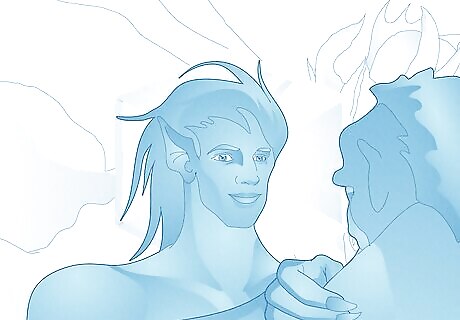
Tritons are generally proud, kind-hearted, and noble. However, because their societies are so isolated from the rest of the world, some triton communities tend to be rather ignorant of other societies’ capabilities (or achievements) and believe they’re owed more respect or thanks from the world above for their protection. Tritons are also proud and a bit arrogant at times but would still lay down their lives to help others. Triton society also has some guilt over letting elemental evils into the Prime Material plane millennia ago and still strives to make up for this. In fact, “triton” means “guardian” in the triton language—emphasizing their noble and heroic goals. Remember: these details could apply to your triton PC, but they don’t have to; they’re all generalizations established for D&D lore, and there’s no rule saying every triton is alike!
Triton Society
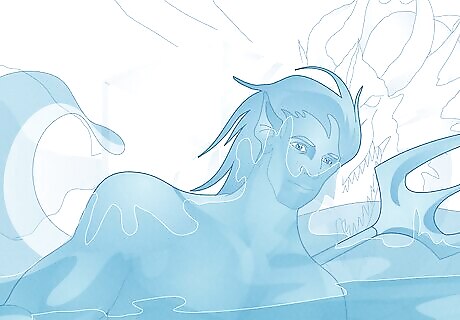
Tritons dwell in major bodies of water of the Material Planes. The exact locations can change based on the setting (world) you’re using for a campaign; in Toril, for example (which is the default world in the Forgotten Realms setting), tritons live everywhere from the Sea of Swords to the Trackless Sea, Inner Sea, the Great Sea, and the oceans of Zakhara. However, some still live in the Elemental Plane of Water as well—particularly those who serve as bodyguards or courtiers of noble marid (water djinn).
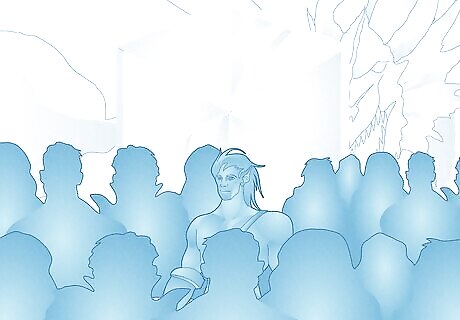
Tritons tend to live in orderly cities and settlements. Traditionally, triton society is run by the military and priesthood of Persana, with the military protecting each community and the priesthood ruling over citizens. However, each settlement or nation is independent of all others; a single triton protectorate often consists of a capital city, a ring of 8 trade cities, 12 farming villages, and 24 outposts surrounding them all. Triton societies often use hydrothermal vents to smelt metals (and make their weapons and armor). In the past, triton societies were considered patriarchal and based on inherited noble titles—though that doesn’t have to be the case for your triton PC’s society. Most tritons tend to have a deep connection to their creator-god, Persana, which is why the priesthood has such power in triton society.
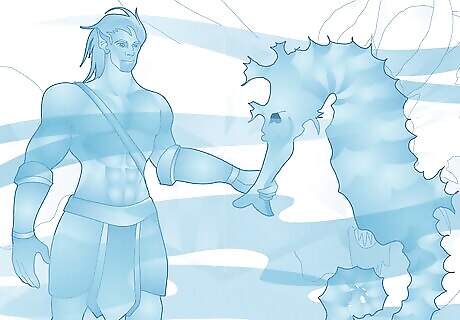
They treat many sea creatures as allies but are wary of land-dwellers. Tritons generally have good relationships with sea creatures like sea lions, twilight turtles (which they domesticate and use as pack animals), giant sea horses, and hippocampi—as well as sapient species like merfolk, shalarin, and morkoth. Although they tend to doubt the capabilities of outsiders from the surface, they rarely attack without cause. If a triton society feels they’ve been wronged by an intruder, they settle the matter in court—with innocents being delivered to shore while the guilty are set adrift 10 miles from shore, leaving their fate to chance.
Triton Names

Triton names traditionally have 2 or 3 syllables. It's common for male triton names to end with a vowel and the letter "S," while female names often end with "N." For surnames, tritons simply use the name of their settlement or protectorate and add a vowel followed by a "TH" to the end of it. Male names: Keros, Nalus, Dharas, Zunis, and Vodos Female names: Irulyn, Orryn, Althen, Eluryn, Adryn, and Vlaryn Surnames: Ahlorsath or Vuuvaxath Tip: These names are just recommendations based on D&D lore. If you want to choose a name that doesn't follow these conventions (or a gender-neutral name), you absolutely can!














Comments
0 comment